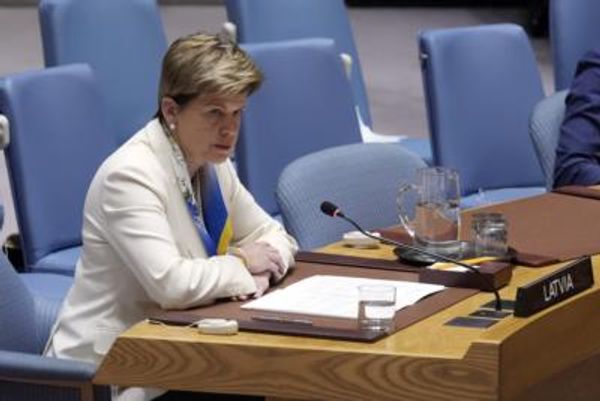Jieh-Yung Lo knows what it's like to experience the 'bamboo ceiling'.
Now the director of the Australian National University's Centre for Asian-Australian Leadership, Mr Lo says one of his most painful experiences of this form of discrimination took place about a decade ago, when he attended a Victorian conference as a local government councillor.
He arrived at the event early and was waiting in the reception area where attendees were being served coffee. Then he realised he'd made the "very horrible mistake" of wearing a black suit with a white shirt.
"This regional councillor came up to me and said, 'Excuse me, young man, can you please give me a cup of coffee?'," he tells ABC RN's This Working Life.
He says the worst part was that the woman didn't believe him.
"She said to me, 'This is a really trumped-up excuse to not do your job'. So she insisted to speak to my manager," he says.
"It took her a while to sink in that I was a local government councillor."
Mr Lo has previously been confused for an accountant or IT worker while working in other sectors – and he's not alone.
He says many Asian Australians will have experienced the bamboo ceiling at some point in their lives.
It's a form of discrimination that includes individual, cultural, and organisational factors that impede their career progress.
And it's still a worryingly common occurrence.
What causes biases?
Mr Lo's experiences with discrimination are what drew him to his current role at the Australian National University, where he is working to help improve diversity in leadership roles.
The centre's research shows that while 14.5 per cent of the Australian population has an Asian heritage, only 1.6 per cent hold a chief executive, C suite or senior leadership role.
This lack of diversity in leadership extends even further.
About a quarter of the Australian population is estimated to have non-European or an Indigenous background. Yet, according to the Australian Human Rights Commission, such backgrounds only account for 5 per cent of senior leadership positions.
"If we're holding a mirror up to ourselves, we're simply not seeing who we are in our positions of leadership in major institutions," Tim Soutphommasane, the former race discrimination commissioner, says.
The reasons for this can be difficult to identify. While people often think of racial discrimination as something overt, Mr Soutphommassane says 'invisible' discrimination is often the root cause of many of these barriers and biases.
"Someone may be treating you with perfect courtesy and be talking to you with a smile, but if they're thinking that you don't really belong, or that you may not be cut out for this role, because the fit isn't quite right, regardless of your qualifications, that works as invisible discrimination."
Invisible discrimination is harder to tackle than overt or violent forms of hatred and racism, he says, but it needs to be addressed if Australian organisations are going to make progress on diversity and representation in our society.
Jieh-Yung Lo agrees, saying if organisations and senior leadership teams are serious about increasing diversity, they need to put it at the centre of their workplace strategy.
"It can't just be a side hustle for an organisation, it needs to happen at the top levels, both a push from bottom-up and top-down."
Creating belonging at work
Simply hiring a diverse talent pool is not enough, Daisy Auger-Dominguez, the US-based Chief People Officer for the Vice media group, says.
It's about creating a sense of belonging for all employees.
"It's creating workplaces where people feel that their voice matters and that they are included in decision making, that they are included in the makeup of an organisation," she says.
She's dedicated her career to removing the roadblocks that make workplaces unwelcoming, unequal, and often unsafe for women, people of colour, LGBTIQ , people with disabilities and other non-normative people.
"Because I know firsthand the marginalisation and loneliness that these employees experience in the workplace," she says.
The daughter of a Dominican father and Puerto Rican mother, Ms Auger-Dominguez often fell prey to what has been described as 'covering' in her early career. This is the practice of downplaying who you are to survive in an organisational context.
She says it was very clear to her when she was starting out that people of colour were often marginalised.
"I fundamentally believe that you simply can't perform at your best when you're constantly modifying or playing down who you are, including your appearance, your body language, your accents, your abilities and your communication style."
Now, she's trying to prevent others having the same experience.
"When they do, I make it a point as a leader to credential them … it can simply be saying 'That's a really interesting point and we might want to work on it a bit. But you know, I need to thank you for sharing it'.
"And that, frankly, gives those individuals that sense of freedom. [They feel] 'I'm welcomed, I'm seen, I can contribute here to my fullest capacity'."
Juliet Bourke, a Professor of Practice at the UNSW Business School, echoes this sentiment.
She says when fairness and respect are in place, employees are able to perform better and will feel psychologically safe to speak up.
"Unfortunately, I don't think you would say Australian leaders [are] the best in class at being culturally intelligent — and not because we're bad people but just our circumstances are somewhat different," Dr Bourke says.
"It's not like we're living in Europe, where everyone speaks four languages quite fluently. And we do kind of expect that when people come to Australia, then they will just absorb the Australian culture."
Doing better
Recently Professor Bourke has been looking at how leaders and peers within teams can enact inclusive behaviours in the workplace.
But that strategy can be undone by micro-behaviours around acknowledgement, she adds.
In her research, she noticed that those who are more similar to the leader of a group are more likely to receive public acknowledgement or endorsement.
While leaders do acknowledge those who are different to themselves, they are three times less likely to do so.
Because of these micro-behaviours, some people in the workplace can feel as if their voice has been weakened.
To prevent this, she suggests leaders self-audit and consider those they tend to lean into.
"Really hold your feet to the fire to say, 'Am I doing that equally to everyone in the team, and what would be the characteristics of those people who I'm not doing it with'.
"And then … actually rebalance that if you want that team to be a high performing team," she says.
RN in your inbox
Get more stories that go beyond the news cycle with our weekly newsletter.







